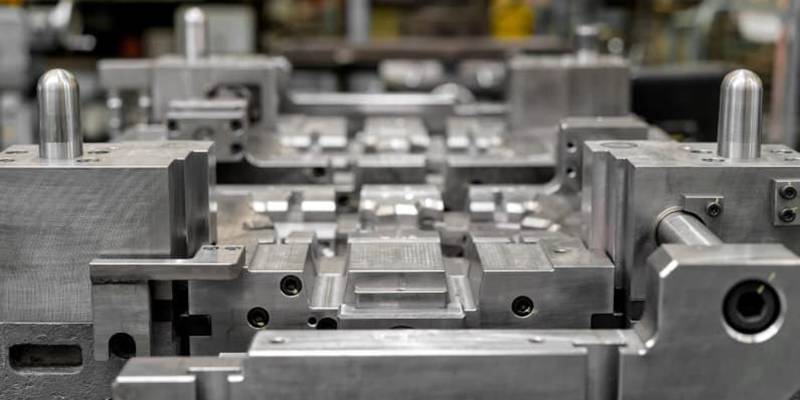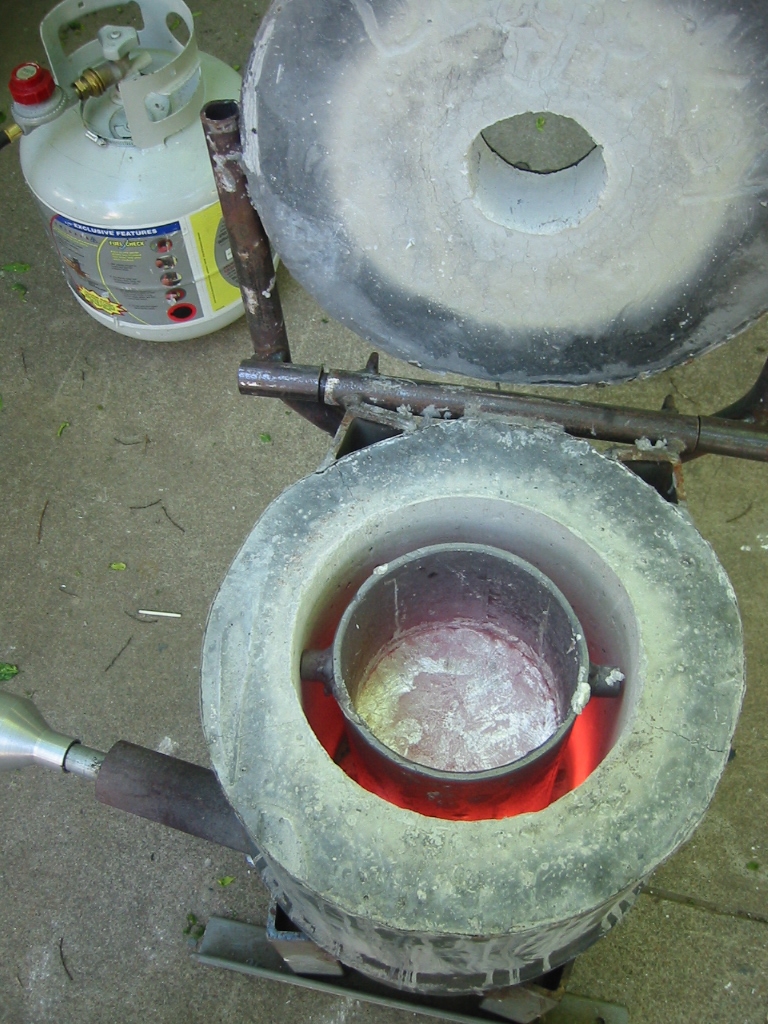Understand the Environmental Impact of Metal Castings and Recycling Practices
Wiki Article
A Comprehensive Guide to the Advantages of Using Aluminum From Foundries
Aluminum from foundries presents a series of advantages that make it a useful material throughout different industries. Its light-weight nature adds to set you back savings in transportation and improves overall item efficiency. Furthermore, aluminum's impressive resistance to rust guarantees long life and reduces maintenance needs. Nonetheless, the benefits expand beyond these aspects (Aluminum Foundry). Understanding the complete spectrum of aluminum's residential properties and their implications can disclose also deeper understandings right into its function in modern applicationsRecognizing Foundry-Grade Aluminum
Foundry-grade aluminum is a specialized product renowned for its remarkable homes and adaptability in numerous applications. This sort of aluminum is frequently generated through controlled casting procedures, permitting for precise control over its structure and microstructure. Therefore, foundry-grade aluminum exhibits exceptional mechanical homes, consisting of exceptional stamina and deterioration resistance, making it ideal for demanding settings.In enhancement to its architectural honesty, foundry-grade aluminum can be easily molded into complex shapes, supplying developers and designers with adaptability in their jobs. Its capacity to hold up against heats even more improves its appeal for markets such as vehicle and aerospace, where performance and reliability are crucial. In addition, foundry-grade aluminum is usually recyclable, adding to sustainability initiatives. By utilizing this material, manufacturers can attain an equilibrium of efficiency, durability, and environmental responsibility, making foundry-grade aluminum a favored selection for a broad range of industrial applications.
Light-weight Qualities and Their Benefits
The light-weight residential or commercial properties of aluminum from foundries provide significant benefits in numerous applications. Minimized transportation costs can be attained because of the lower weight, enabling a lot more effective logistics. Additionally, the boosted item efficiency stemmed from using lighter products can bring about boosted performance and user experience.Lowered Transportation Costs
Aluminum's lightweight homes significantly contribute to minimized transportation costs, making it an eye-catching option for various sectors. When compared to larger products such as steel, aluminum enables lighter lots, allowing lorries to move more products effectively. This reduction in weight can bring about substantial cost savings on fuel usage, as lighter lorries need less energy to operate. In addition, the capability to move larger amounts without surpassing weight limitations boosts logistical effectiveness. Industries such as aerospace and auto advantage particularly from these advantages, as they can enhance shipping processes and lower overall operational costs. Consequently, using aluminum from foundries not just streamlines transportation yet likewise supports lasting techniques by minimizing carbon discharges related to hefty products transport.Improved Item Efficiency

Corrosion Resistance: A Secret Benefit
Aluminum from foundries uses extraordinary corrosion resistance, primarily due to its all-natural oxide layer. This protective coating types when aluminum is exposed to air, preventing more oxidation and degeneration. Because of this, products made from aluminum can show lasting durability, making them suitable for various applications in difficult environments.Natural Oxide Layer
The natural oxide layer that bases on aluminum surface areas works as an essential defense against corrosion. This thin, clear obstacle develops when aluminum is exposed to oxygen, effectively safeguarding the underlying metal from different ecological factors. The oxide layer is both secure and durable, guaranteeing that aluminum maintains its honesty over time. Unlike other steels that might wear away more swiftly, aluminum's oxide layer stops the development of corrosion and various other destructive substances. This characteristic is particularly helpful in markets where materials are subjected to moisture or severe chemicals. As a result, the existence of the all-natural oxide layer contributes significantly to the durability and dependability of aluminum items, making it a favored option in numerous applications.Long-lasting Resilience
While numerous products catch the devastations of time and ecological direct exposure, the long-lasting sturdiness of aluminum stands apart, primarily as a result of its remarkable corrosion resistance. This resistance is attributed to an all-natural oxide layer that creates on its surface, efficiently securing the metal from dampness, her latest blog chemicals, and other corrosive representatives. Unlike steel, which can rust and degrade over time, aluminum continues to be undamaged, making it optimal for various applications, consisting of construction, auto, and marine industries. Its light-weight nature, combined with resilience, allows for lowered maintenance costs and longer life expectancies in products. Subsequently, aluminum from foundries supplies a sustainable alternative that reduces substitute frequency, adding to both financial efficiency and ecological responsibility. This durability boosts its appeal in many applications.The Recyclability of Aluminum
Provided its considerable check use throughout various markets, the recyclability of aluminum offers a considerable ecological advantage. Aluminum can be reused indefinitely without shedding its residential or commercial properties, making it a prime prospect for lasting methods. The reusing procedure requires just a portion of the power needed to create brand-new aluminum from resources, decreasing greenhouse gas exhausts and conserving all-natural resources. Furthermore, the recycling of aluminum diverts waste from land fills, adding to extra effective waste management systems.
Cost-Effectiveness in Different Applications
Many industries recognize aluminum's cost-effectiveness, making it a preferred option for various applications. Its lightweight nature minimizes transport prices and power usage, significantly adding to overall financial savings. In production, aluminum's malleability enables for reliable shaping and creating, lessening waste during manufacturing.Moreover, aluminum's durability warranties durability, which decreases the need for regular replacements and upkeep. The material's deterioration resistance additionally equates right into lower long-lasting prices, as it requires less safety coating and treatment compared to various other steels.

Sustainability and Ecological Influence
Aluminum's cost-effectiveness is complemented by its sustainability and favorable ecological effect. The metal is extremely recyclable, with about 75% of all aluminum generated still in operation today. This recyclability substantially lowers the need for basic material removal, decreasing energy usage and connected greenhouse gas discharges. Shops visit the site play a crucial duty in the reusing procedure, utilizing sophisticated innovations to repurpose scrap aluminum effectively.Aluminum production from recycled material consumes just around 5% of the power needed for main aluminum production. This significant energy savings translates to decrease carbon impacts, aligning with international sustainability objectives. Additionally, aluminum's lightweight nature boosts fuel efficiency in transportation applications, better adding to minimized discharges throughout its lifecycle. As industries increasingly prioritize lasting methods, aluminum from foundries becomes a positive selection, advertising ecological stewardship while supporting financial development.
Often Asked Concerns
What Are the Usual Applications of Foundry-Grade Aluminum?
Typical applications of foundry-grade aluminum include auto elements, aerospace parts, equipment, construction products, and consumer goods. Its light-weight nature, corrosion resistance, and superb mechanical residential or commercial properties make it appropriate for diverse sectors and producing processes.Exactly How Is Foundry-Grade Aluminum Produced?
Foundry-grade aluminum is generated with melting aluminum scrap or ingots, complied with by alloying with various other steels. The molten aluminum is after that cast right into mold and mildews, permitting it to solidify into various forms for diverse applications.What Are the Safety And Security Factors To Consider When Collaborating With Aluminum?
Security considerations when working with aluminum include correct air flow to avoid inhaling dirt, use individual safety equipment to stop skin call, and understanding of fire risks connected with liquified aluminum throughout handling and spreading.Exactly How Does Foundry-Grade Aluminum Contrast to Other Metals?
Foundry-grade aluminum provides a premium strength-to-weight proportion compared to numerous steels, alongside exceptional deterioration resistance and thermal conductivity. Its convenience and capacity to be easily shaped make it a preferred option in different applications.What Upkeep Is Required for Aluminum Products?
Aluminum items call for minimal maintenance, mostly entailing routine cleaning to stop oxidation and dust accumulation (Wisconsin Aluminum Foundry). Safety coverings may improve toughness, while regular assessments can ensure architectural honesty and resolve any kind of wear or damages immediatelyFoundry-grade aluminum is a specific material renowned for its phenomenal homes and flexibility in various applications. Leveraging light-weight buildings, aluminum improves product efficiency throughout different applications. Unlike steel, which can rust and weaken over time, aluminum continues to be undamaged, making it perfect for numerous applications, consisting of construction, automotive, and aquatic industries. Aluminum manufacturing from recycled product takes in just around 5% of the energy needed for main aluminum production. Foundry-grade aluminum is generated with melting aluminum scrap or ingots, followed by alloying with various other steels.
Report this wiki page